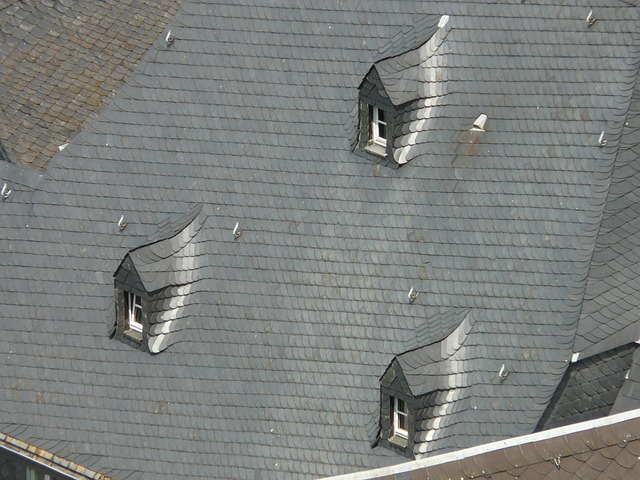Cool roofs, utilizing reflective materials and coatings, significantly reduce solar radiation absorption, mitigating the urban heat island effect and lowering energy consumption. These eco-friendly designs feature innovative materials like lightweight concrete and ceramic tiles, enhancing thermal resistance and reflecting sunlight. Key elements for optimal efficiency include high heat reflectivity, proper insulation layers, and collaborative integration by professionals. Recent case studies show successful reductions in cooling costs and interior temperature increases in various climates, setting new benchmarks for sustainable urban environments. Emerging trends in cool roof technology focus on self-cleaning, antimicrobial coatings and smart IoT temperature control for enhanced energy efficiency and reduced maintenance costs.
“Uncover the secret to a cooler, more energy-efficient home with cool roof materials. This comprehensive guide explores the transformative power of reflecting heat away from your property, significantly reducing cooling costs. From understanding the basic principles behind cool roofs to delving into various material options and design considerations, we provide an in-depth look at their benefits. Additionally, case studies highlight successful implementations, while future trends hint at even more innovative solutions for efficient roof designs.”
Understanding Cool Roofs: The Basics and Their Benefits
Cool roofs are designed to reflect heat away from buildings, offering an efficient way to reduce cooling costs and lower energy consumption. This concept is especially beneficial in urban areas where the ‘urban heat island effect’ is prominent, leading to higher temperatures compared to surrounding rural regions. By adopting energy-efficient roof designs that incorporate reflective materials, buildings can stay cooler, reducing the need for air conditioning and minimizing their environmental footprint.
These roofs work by preventing solar radiation from being absorbed into the building’s structure, which would otherwise generate heat and increase interior temperatures. Reflective coatings or surfaces on cool roofs bounce sunlight back into the atmosphere, thereby decreasing the transfer of heat to the building. This simple yet effective strategy not only benefits homeowners and businesses by lowering energy bills but also contributes to sustainable urban planning and a more eco-conscious approach to architecture.
Types of Cool Roof Materials: A Comprehensive Overview
Cool roofs have emerged as a game-changer in sustainable building design, offering an effective solution to reduce urban heat island effects and lower energy consumption. When it comes to materials, several options are available, each with unique properties that contribute to their effectiveness in reflecting heat and improving insulation.
The most common types include reflective coatings, lightweight concrete, and special ceramic tiles. Reflective coatings are applied to traditional roofing materials, enhancing their ability to reflect sunlight and absorb less heat. Lightweight concrete roofs, often made from lightweight aggregate, offer excellent thermal resistance and can significantly reduce the overall roof temperature. Ceramic tiles designed for cool roofs have specific pigments that scatter sunlight, making them highly reflective. These materials not only help in energy conservation but also contribute to a building’s aesthetic appeal with their diverse color options, ensuring that structures remain comfortable and environmentally friendly.
Design Considerations for Energy-Efficient Roofs
When designing roofs with heat reflection and energy efficiency in mind, several key considerations come into play. One primary aspect is choosing the right materials that offer high reflectivity to minimize heat absorption. Cool roof materials like reflective tiles, metal, or special coatings can significantly reduce the amount of heat transferred into the building interior. This is particularly beneficial in regions with hot climates, helping to lower cooling costs and create a more comfortable indoor environment.
Additionally, proper insulation plays a crucial role in energy-efficient roof designs. Strategically placed insulation layers can trap cool air during summer months, preventing heat transfer from the exterior. Integrating these design elements requires careful planning and often involves collaborating with architects, engineers, and roofing professionals to ensure optimal performance and longevity of the structure.
Case Studies: Successful Implementation of Cool Roof Designs
In recent years, numerous case studies have highlighted the successful implementation of cool roof designs, showcasing their effectiveness in reducing cooling costs and minimizing the urban heat island effect. These real-world examples demonstrate how innovative materials and strategic design choices can significantly impact building performance. For instance, a study conducted in hot and humid climates revealed that applying reflective coatings and lightweight insulation on rooftops led to a notable decrease in indoor temperatures and energy consumption for air conditioning systems.
Another successful case involves the retrofitting of an old commercial structure with energy-efficient roof designs. By incorporating highly reflective membranes and a cool-hood system, the building’s owners witnessed a substantial drop in summer energy bills. These implementations not only reduced the building’s carbon footprint but also improved overall occupant comfort, setting new standards for sustainable roofing practices in urban environments.
Future Trends and Innovations in Cool Roof Technology
As the world shifts towards more sustainable and eco-friendly solutions, future trends in cool roof technology look promising. Researchers and manufacturers are constantly innovating to improve energy efficiency and reduce environmental impact. One emerging trend is the development of self-cleaning and antimicrobial coatings that not only reflect heat but also minimize maintenance requirements. These advanced materials can repel dirt, dust, and water, ensuring prolonged reflective properties and further lowering cooling costs.
Additionally, integration of smart technologies with cool roofs is on the rise. Sensors and IoT (Internet of Things) devices can monitor roof temperatures, humidity, and even weather patterns, allowing for more precise temperature control and optimized energy usage. This data-driven approach to roofing promises to make buildings more responsive and adaptable to their surroundings, contributing to overall energy conservation and a greener future.
Cool roofs offer a promising solution for achieving energy-efficient roof designs, significantly reducing cooling costs and minimizing environmental impact. By reflecting heat and absorbing less energy, these innovative materials contribute to sustainable building practices. As technology advances, we can expect even more efficient and aesthetically pleasing options, making cool roofs an increasingly attractive choice for modern architecture. This shift towards eco-friendly solutions not only benefits homeowners but also plays a vital role in creating a greener, more sustainable future.
